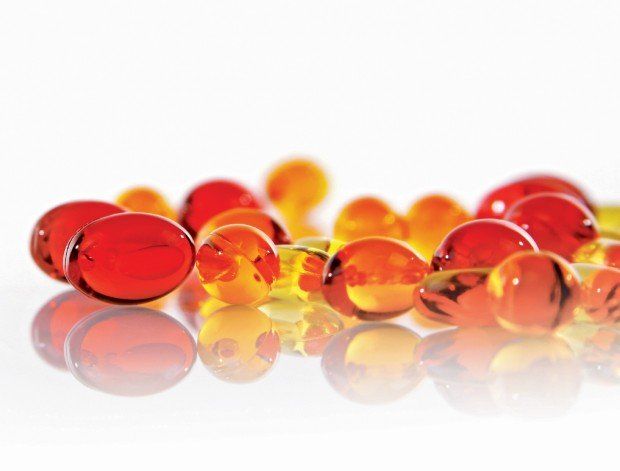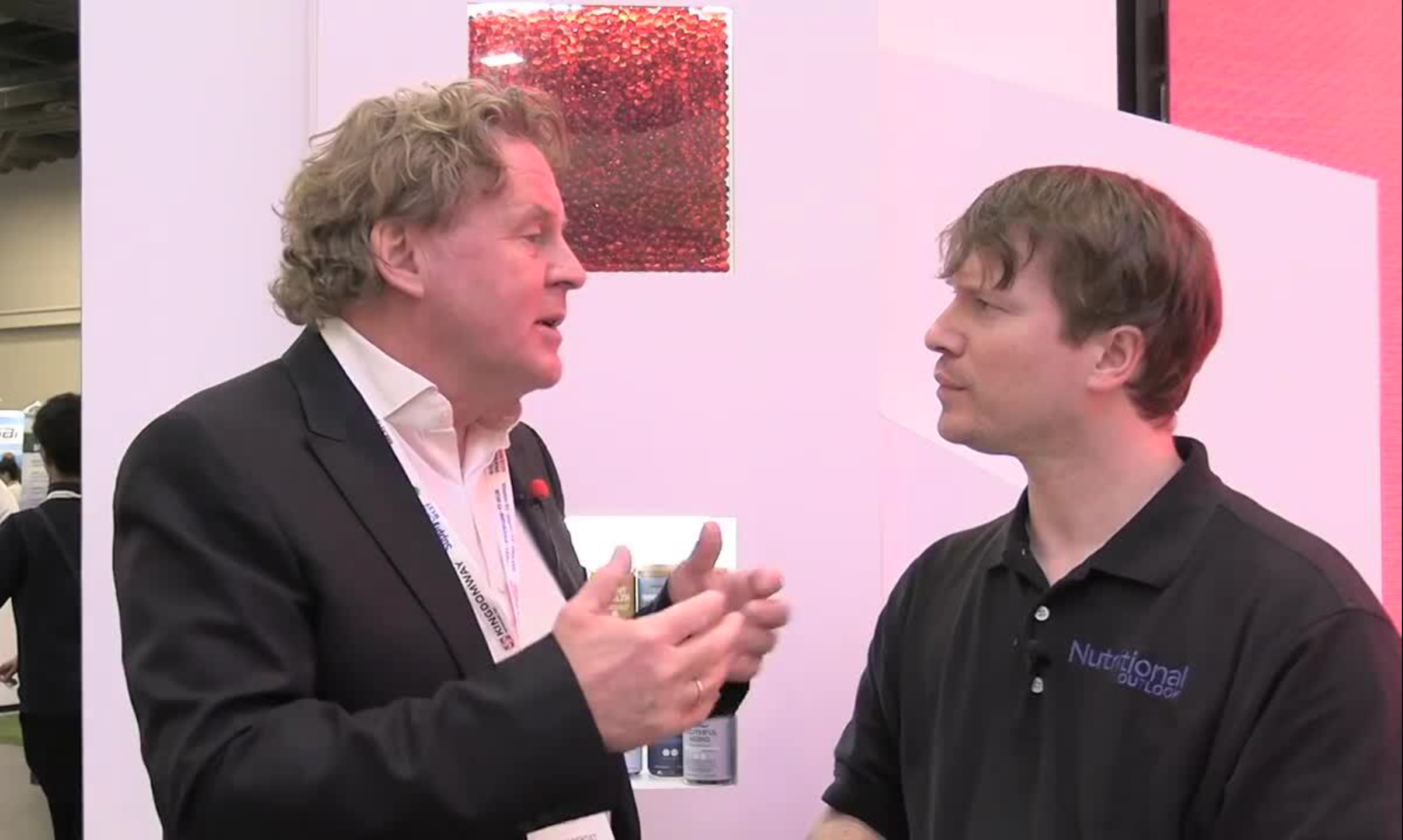Ultra-High Concentrates Are the Next Omega-3, SupplySide West Report
Omega-3 suppliers are now taking omega-3 concentrates for dietary supplements into near-pharmaceutical territory with concentrations up to 90%, including the first high-concentrate algae oil on the market.
Photo © iStockphoto.com/Gubcio

Omega-3 suppliers, both of fish and algal oil, are now taking omega-3 concentrates for dietary supplements into near-pharmaceutical territory, with concentrations up to 90%. Three suppliers, DSM Nutritional Products (Parsippany, NJ), BASF Human Nutrition (Florham Park, NJ), and FMC’s Epax division (Sandvika, Norway), unveiled new ultra-high-concentrate offerings at SupplySide West.
FMC debuted a fish-oil ultra-high concentrate in the triglyceride form. Its new Epax 4535 TGN triglyceride oil contains over 80% EPA/DHA fatty acids-a minimum of 450 mg/g EPA and a minimum of 350 mg/g DHA, for a total minimum omega-3 content of 860 mg/g. By contrast, a standard 1812 fish oil pill would offer only about 30% EPA/DHA content, or approximately 260 mg/g total, the firm says.
“To our knowledge, this is the highest concentration of EPA and DHA in a 90% triglyceride oil, which is the natural form of omega-3. This is the highest-concentration triglyceride product on the market today, so it’s a real category-leading innovation for us,” said Ravi Annavarapu, global platform manager, nutraceuticals and natural colors, FMC Health and Nutrition.
Epax touts the triglyceride form as more bioavailable. Pharmaceutical drugs like Lovaza are in the ethyl ester form. But FMC is also active in the ethyl esters space, which for now outsizes the triglycerides market. At SupplySide, the company also promoted its Epax 4030 EE high-concentrate ethyl ester oil first introduced at this year’s Vitafoods show in May.
BASF’s new ultra-high-concentrate offering is Pronova Pure 46:38, which delivers up to 90% omega-3 content and an EPA:DHA ratio of 46:38. The company is targeting the cognitive and heart health markets with this ingredient. “If you look at the products on the market today, a lot of them have either just high EPA or just high DHA, and in this case, we have a high level of both, so you have the total health for both brain and heart health,” said marketing manager Eva Johnson.
Anne van Gastel, business director, BASF Human Nutrition, also pointed out in the company’s press release that the 46:38 ratio is “the most clinically studied, so it gives our customers a solid scientific foundation to market their products.”
As for DSM, a new ultra-high-concentrate addition to its Meg-3 omega-3 fish oil line offers up to 85% omega-3 content and is set to launch in Q1 2016. The company pointed out that the ingredient is “customizable,” meaning companies can tweak EPA and DHA levels to their liking.
First Algal High-Concentrate
Leveraging the algal-DHA expertise of its Martek Biosciences and life’sDHA algal omega-3 acquisition, DSM also has plans to roll out what it believes is the first high-concentrate algal oil on the market. The ingredient would offer up to 85% omega-3 DHA.
“We have the pioneers in this space,” said Andre Melo, business director, Meg-3, DSM Nutritional Products North America. “There is no other company that can get even close to us as far as our DHA technology. It comes from the Martek legacy, and with that technology that we have developed now that’s being implemented, we’ll be the only company able to achieve those high concentration levels for DHA. There’s nobody else that has the ability to do that.”
Of the fermentation-derived algal oil, Georges Bergen, senior manager, regulatory affairs, DSM Nutritional Products North America, pointed out that the algal oil “still fits within the original GRAS determination that we have. It’s just a change in manufacturing process…the same food-use applications still apply.”
Getting Close to Pharma?
When asked how close these ultra-high-concentrates come to high-concentrate pharmaceutical omega-3 doses, FMC’s Annavarapu said of Epax 4535 TGN, “This is right around there, actually. There is now a set definition for what a pharmaceutical level is. A concentration range of 75%-97% is basically a pharmaceutical API, and this product falls in that range.”
“Of course,” he continued, “you cannot have a product which is exactly the same spec as a pharmaceutical because then it becomes an API. So our product is in a different form, but it’s in the same concentration range.”
Pharmaceutical Expertise Helps the Supplements Side
Suppliers well accustomed to formulating higher concentrations for the pharmaceutical market are able to apply their expertise to the supplements space.
BASF, which is the maker of omega-3 pharmaceutical Lovaza, has the expertise to achieve these high concentrates for supplements. “We have over a decade of experience in pharmaceutical omega-3 products, so some of that technology is coming from that side,” Johnson said.
Benefits to Consumers
These ultra-high concentrates offer numerous benefits to consumers who may be willing to pay a higher price for the privilege. As suppliers place their stakes in high concentrates, they are counting on increased demand to carry this new category forward.
First, of course, is the potential for higher doses delivered in smaller, easier-to-take pills. And second is the ability to reduce the number of pills consumers may have to take daily, if all of the omega-3 benefit can be squeezed into a single, ultra-concentrated pill.
Third, higher concentrations omit the fats and calories that consumers don’t need by delivering higher amounts of just the beneficial EPA and DHA fats that actually benefit health, such as heart health and brain health. “When you put this all in a capsule, you get the majority of ‘good stuff,’ because at the end of the day, you don’t want to get all this unnecessary fish fat,” FMC’s Annavarapu said. “You want to get the ingredient that’s good for you, and this will enable the consumer to maximize the potential of that.”
BASF’s Johnson also confirmed that the company's ultra-high concentrate provides “a high, healthful benefit of EPA/DHA, without all the unneeded, unbeneficial fat-like in standard fish oil, where 70% of it is fat that you don’t need.”
Ultra-High Concentrates Are the Future
These suppliers say they are very much concentrating now on the ultra-high-concentrates space, which some say looks to outpace the rest of the omega-3 market for the time being.
Annavarapu called ultra-high concentrates the “next generation of innovation” in the nutraceutical omega-3 market, saying, “I believe the wave of the future is higher concentrations of omega-3.”
But, he added, “Of course, it has to be cost-effective, along with being a higher concentration. But it is the wave of the future because consumers are smart and they’re recognizing more and more that what they need is the EPA and DHA in the capsule and not just fish oil. Many times you see a 1000-mg fish oil, but two different 1000-mg fish oils can have very different levels of omega-3, and consumers are realizing the value of a higher concentration.”
Jennifer Grebow
Editor-in-Chief
Nutritional Outlook magazine
jennifer.grebow@ubm.com

Prinova acquires Aplinova to further increase its footprint in Latin America
April 7th 2025Prinova has recently announced the acquisition of Brazilian ingredients distributor Aplinova, which is a provider of specialty ingredients for a range of market segments that include food, beverage, supplements, and personal care.






















